Curation + Writing + Editions
2010–2013
Stanford University and University of Edinburgh. Funded by NSF (USA) and EPSRC (UK).
More information about the Synthetic Aesthetics book, or visit syntheticaesthetics.org.
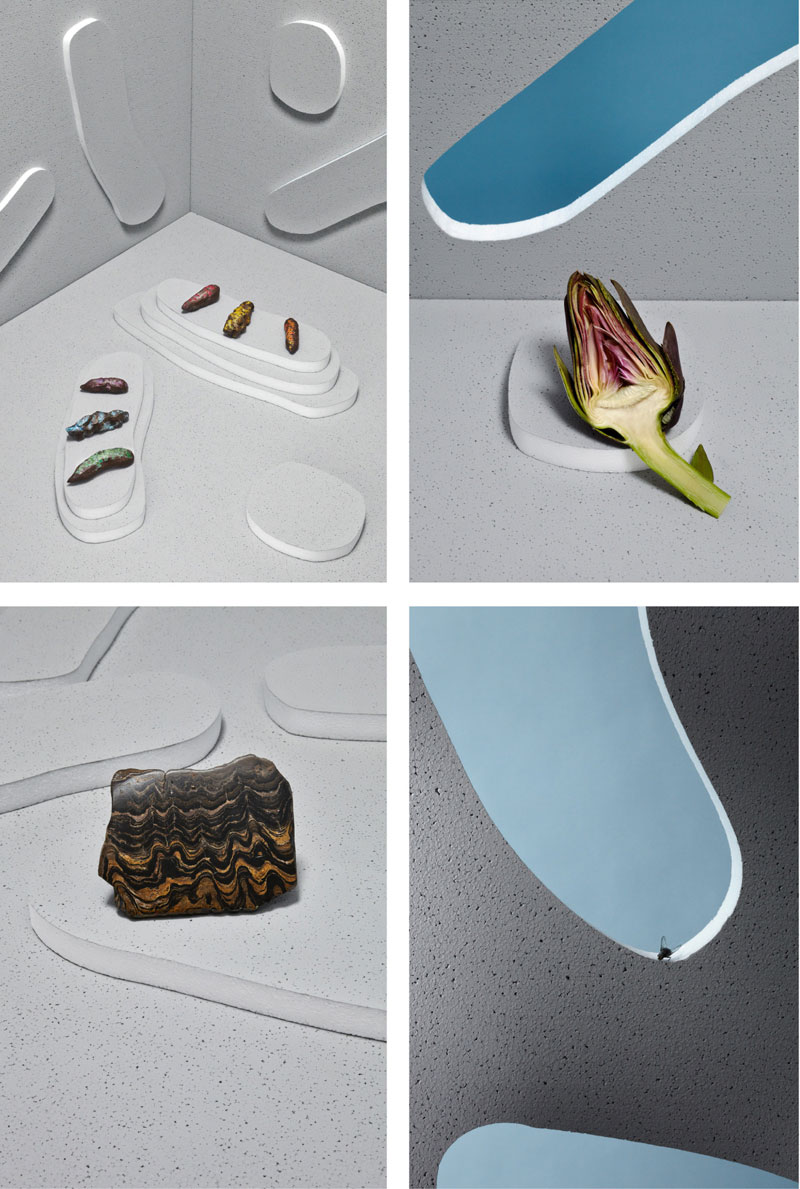
How would you design nature? Images from Synthetics Aesthetics: Investigating Synthetic Biology’s Designs on Nature (The MIT Press, 2014). Art direction: Kellenberger-White, photography: Theo Cook.
Synthetic Aesthetics is an experimental, international research project between synthetic biology, art, design and social science that was funded at the National Science Foundation (NSF) and Engineering and Physical Sciences Research Council (EPSRC) IDEAS Factory Sandpit in 2009. Run by the University of Edinburgh, Scotland, and Stanford University, California, the project team comprises bioengineers Drew Endy (Stanford) and Alistair Elfick (Edinburgh), and social scientists Jane Calvert (Edinburgh) and Pablo Schyfter (Edinburgh), and myself. As Design Fellow, my role was to curate, research and produce this collaborative project with our team members and participants around the world. The project is fully explored in our book, Synthetics Aesthetics: Investigating Synthetic Biology’s Designs on Nature, published by The MIT Press in 2014.
ABOUT THE PROJECT
Design is central to synthetic biology as the living world becomes a product of design and manufacturing choices rather than evolutionary pressures alone. But the design of nature is not straightforward. We tend to understand design in terms of tangible objects like phones and buildings rather than in the realm of microscopic biology. It becomes much more complicated when the realm of design is living material. In Synthetic Aesthetics, we ask: what does it mean to design nature, how might we design nature, and how might we design it well?
By instigating new collaborations, we have explored and developed territory between synthetic biology, art and design, and social science. What insights can design offer in designing microscopic entities for a human-scale world? Can the exchange of skills and ideas enable the development of new forms of craft and collaboration? Can these collaborations inform and shape the developing field of synthetic biology? How might our understanding of art and design be challenged by interaction with synthetic biology?
The core of Synthetic Aesthetics was to bring together six leading synthetic biologists and six internationally-renown artists and designers to explore designing, understanding and building the living world. Selected through an open call process, the collaborations began with intensive reciprocal residencies between July and December 2010, where residents first spent two weeks in the laboratory, followed by two weeks in their exchange partner's studio. The residencies took place across the USA and Europe, and in Australia and Japan, with Synthetic Aesthetics' social scientists, Pablo Schyfter and Jane Calvert, and Design Fellow Alexandra Daisy Ginsberg supporting and documenting the exchanges.
The collaborations have challenged assumptions, developed new forms of critique, and given rise to novel perspectives on design and biology. Our residents—who represent the spectrum of synthetic biology (from protocells to parts to plants) and art and design practice (bio art, product design, art, smell design, architecture, and music)—have encouraged us to think about this emerging field in new ways, their work serving as catalysts and starting points for the examination and discussion of the design of living machines.
The unusual reciprocal format has enabled the residents to share their practice, knowledge and ideas, and they continue to inform research of both scientific and art/design significance. Since the initial residencies, Synthetic Aesthetics has provided a framework for this ongoing discussion, with an ever-expanding global network of synthetic biologists, artists, designers, social scientists and others developing through collaborations, teaching, events and more.
We hope our findings will contribute to ongoing work in both communities, developing new spaces for practice, collaboration and critical investigation of synthetic biology.
OUTCOMES
We continue to share our work through talks, workshops, exhibitions and publications. While a more comprehensive list of activities can be found on syntheticaesthetics.org, activities include:
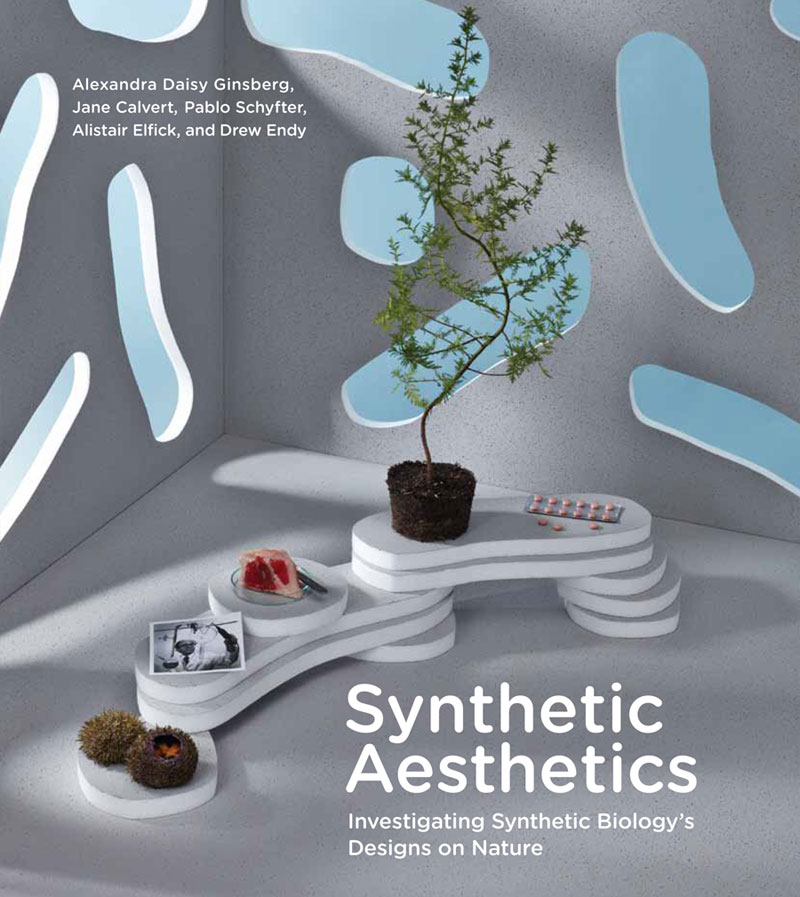
Synthetic Aesthetics: Investigating Synthetic Biology's Designs on Nature, by Alexandra Daisy Ginsberg, Jane Calvert , Pablo Schyfter , Alistair Elfick and Drew Endy and contributors, The MIT Press, 2014. This collaborative book explores synthetic biology and design, and includes chapters by all the residents describing their work.
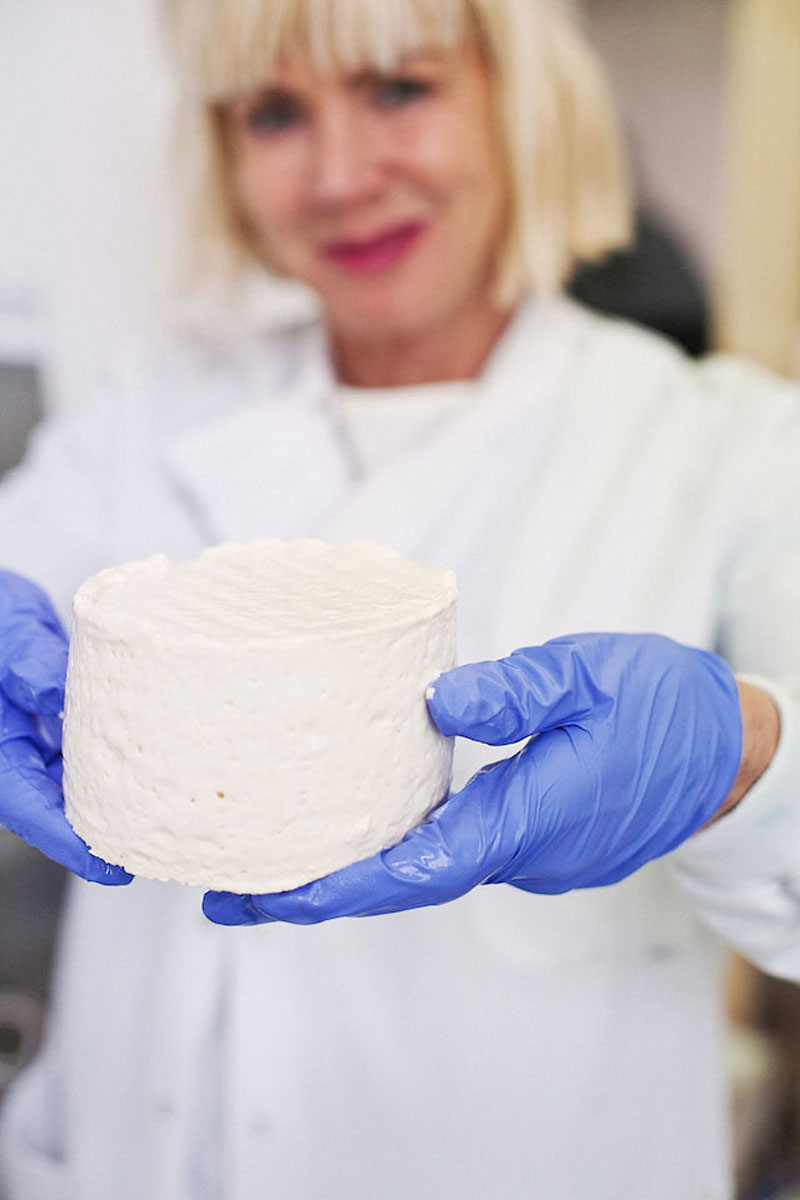
Selfmade by Christina Agapakis and Sissel Tolaas. Exhibited at Grow Your Own… Life After Nature, Science Gallery, Dublin, Ireland, October 25 2013–January 19 2014. Photo: Science Gallery.
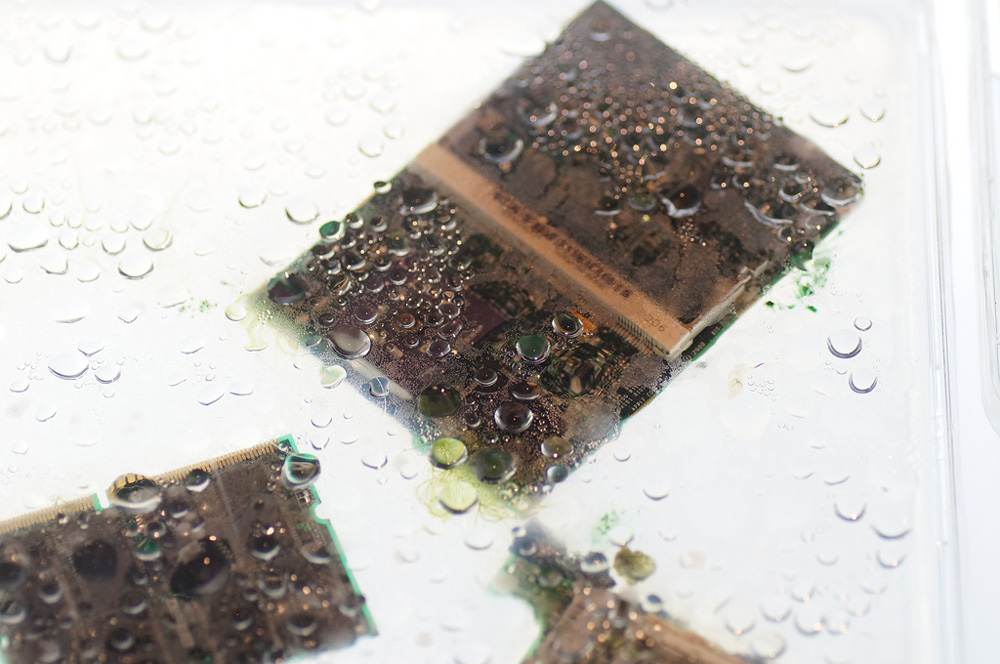
Biogenic Timestamp by Hideo Iwasaki and Oron Catts. Exhibited at Projekt Genesis, Ars Electronica Center, Linz, Austria, August 1 2013–July 2014. Photo: Ars Electronica.
Biogenic Timestamp by Hideo Iwasaki and Oron Catts. Exhibited at InterCommunication Center, Tokyo, Japan, December 25 2013–March 2 2014.
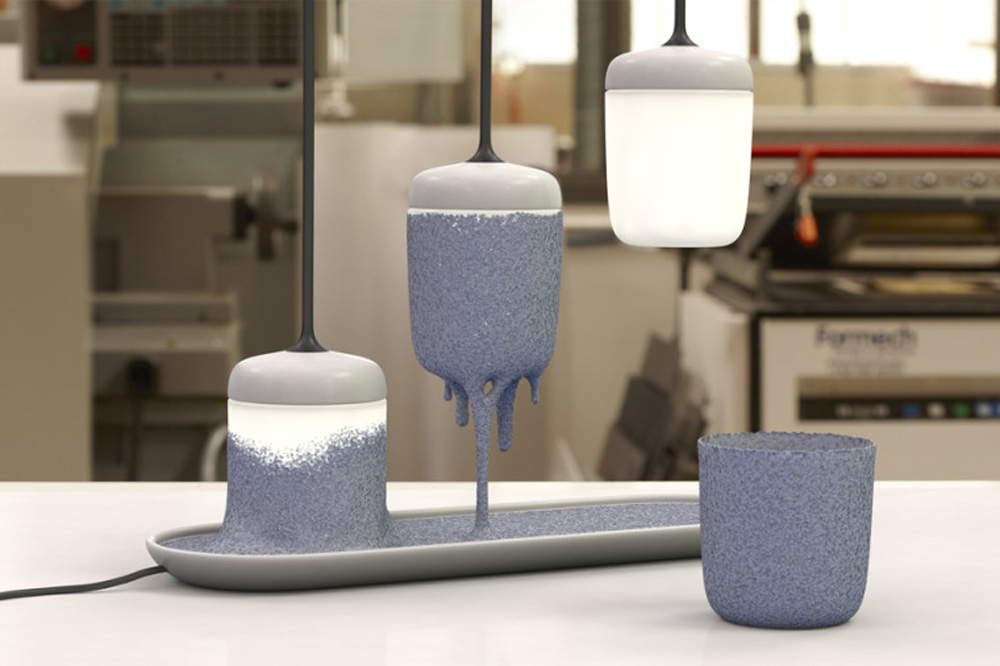
Packaging that Creates its Contents by Will Carey, Adam Reineck, Reid Williams, and Wendell Lim. Exhibited at En Vie/Alive: New Design Frontiers, Espace Fondation EDF, Paris, France, April 26 2013– September 1 2013. Image: Will Carey/IDEO.
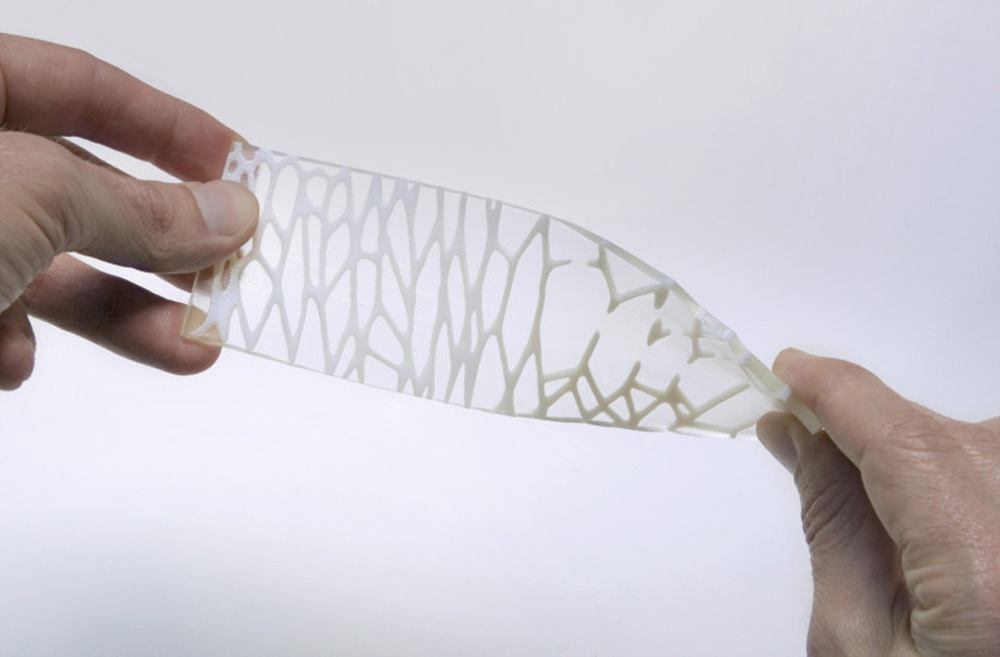
Biocomputation by David Benjamin and Fernan Federici. Exhibited at En Vie/Alive: New Design Frontiers, Espace Fondation EDF, Paris, France, April 26 2013–September 1 2013. Photo: David Benjamin.
Biocomputation by David Benjamin and Fernan Federici. Exhibited at Biodesign, Netherlands Architecture Institute, Rotterdam, Netherlands, September 27 2013–January 26 2014.
Design and Synthetic Biology: Connecting People and Technologies. If synthetic biology is going to become a design-led discipline, how will these designs connect to people and the world? Designs always embody values, and this raises challenging questions such as: what counts as ‘good design’ in synthetic biology? Who decides? And what ends should synthetic biology designs be directed towards? Profitability? Democracy? Sustainability? Conference Session at SB6.0 - The Sixth International Meeting on Synthetic Biology, Imperial College London, July 9 2013.
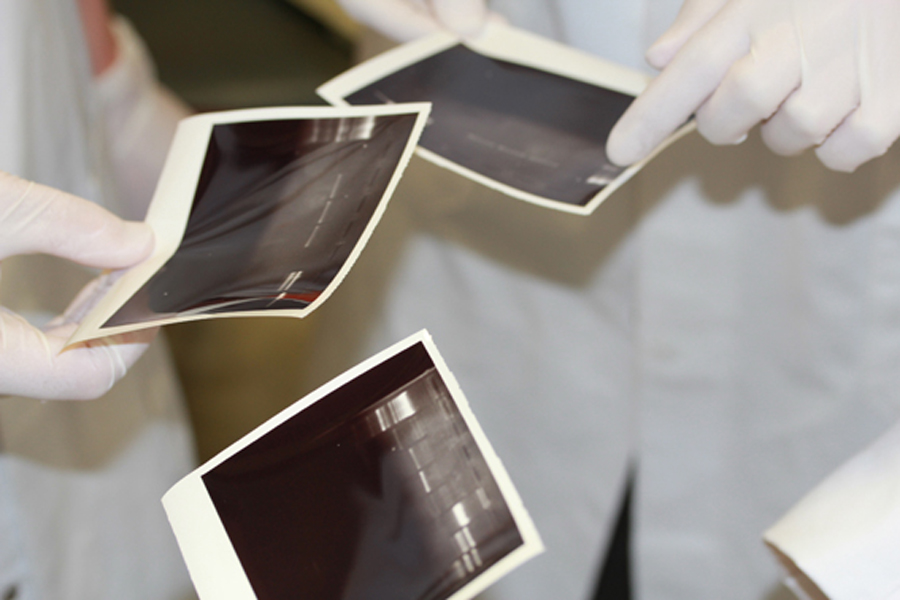
Synthesis Exchange Laboratory. A pilot 6-day laboratory exchange for artists, designers, scientists and others, developed by Synthetic Aesthetics in partnership with The Arts Catalyst, SymbioticA and UCL, funded by the Wellcome Trust. University College London, July 2011. Photo: Melanie Jackson.
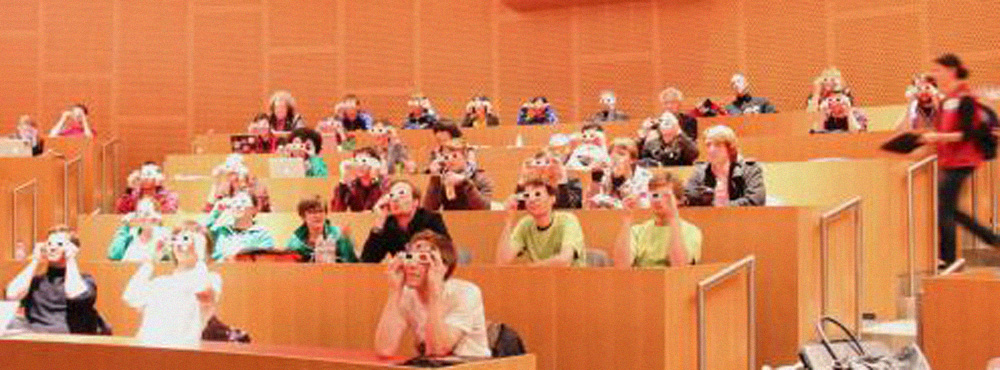
Synthetic Aesthetics Design Workshop. Curated by Alexandra Daisy Ginsberg to host the first discussions between iGEM teams working with designers and artists, and teams working as artists and designers. International Genetically Engineered Machines competition, MIT, Cambridge, November 2010.

How Would You Design Nature?, Synthetic Aesthetics symposium curated and organised by Alexandra Daisy Ginsberg and Orkan Telhan. MIT MediaLab, MIT, Cambridge, November 2010 .
How would you design nature? Images from Synthetics Aesthetics: Investigating Synthetic Biology’s Designs on Nature (The MIT Press, 2014). Art direction: Kellenberger-White, photography: Theo Cook.
Synthetic Aesthetics: Investigating Synthetic Biology's Designs on Nature, by Alexandra Daisy Ginsberg, Jane Calvert , Pablo Schyfter , Alistair Elfick and Drew Endy and contributors, The MIT Press, 2014. This collaborative book explores synthetic biology and design, and includes chapters by all the residents describing their work.
Selfmade by Christina Agapakis and Sissel Tolaas. Exhibited at Grow Your Own… Life After Nature, Science Gallery, Dublin, Ireland, October 25 2013–January 19 2014. Photo: Science Gallery.
Biogenic Timestamp by Hideo Iwasaki and Oron Catts. Exhibited at Projekt Genesis, Ars Electronica Center, Linz, Austria, August 1 2013–July 2014. Photo: Ars Electronica.
Biogenic Timestamp by Hideo Iwasaki and Oron Catts. Exhibited at InterCommunication Center, Tokyo, Japan, December 25 2013–March 2 2014.
Packaging that Creates its Contents by Will Carey, Adam Reineck, Reid Williams, and Wendell Lim. Exhibited at En Vie/Alive: New Design Frontiers, Espace Fondation EDF, Paris, France, April 26 2013– September 1 2013. Image: Will Carey/IDEO.
Biocomputation by David Benjamin and Fernan Federici. Exhibited at En Vie/Alive: New Design Frontiers, Espace Fondation EDF, Paris, France, April 26 2013–September 1 2013. Photo: David Benjamin.
Biocomputation by David Benjamin and Fernan Federici. Exhibited at Biodesign, Netherlands Architecture Institute, Rotterdam, Netherlands, September 27 2013–January 26 2014.
Design and Synthetic Biology: Connecting People and Technologies. If synthetic biology is going to become a design-led discipline, how will these designs connect to people and the world? Designs always embody values, and this raises challenging questions such as: what counts as ‘good design’ in synthetic biology? Who decides? And what ends should synthetic biology designs be directed towards? Profitability? Democracy? Sustainability? Conference Session at SB6.0 - The Sixth International Meeting on Synthetic Biology, Imperial College London, July 9 2013.
Synthesis Exchange Laboratory. A pilot 6-day laboratory exchange for artists, designers, scientists and others, developed by Synthetic Aesthetics in partnership with The Arts Catalyst, SymbioticA and UCL, funded by the Wellcome Trust. University College London, July 2011. Photo: Melanie Jackson.
Synthetic Aesthetics Design Workshop. Curated by Alexandra Daisy Ginsberg to host the first discussions between iGEM teams working with designers and artists, and teams working as artists and designers. International Genetically Engineered Machines competition, MIT, Cambridge, November 2010.
How Would You Design Nature?, Synthetic Aesthetics symposium curated and organised by Alexandra Daisy Ginsberg and Orkan Telhan. MIT MediaLab, MIT, Cambridge, November 2010 .